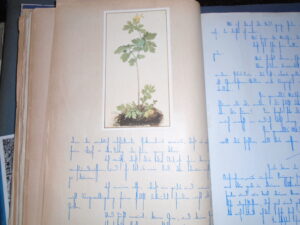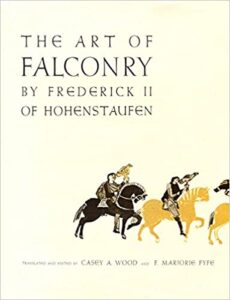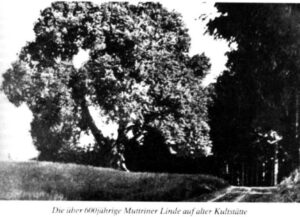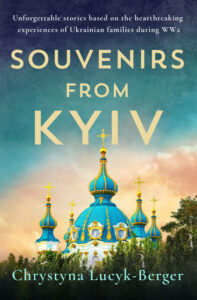Benjamin of Tudela
Introduction
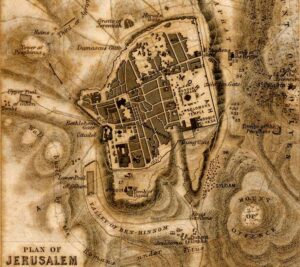
“Jerusalem […] is a small city, fortified by three walls. It is full of people whom the Mohammedans call Jacobites, Syrians, Greeks, Georgians, and Franks, and people of all tongues. It contains a dying-house, for which the Jews pay a small rent annually to the king, on condition that besides the Jews no other dyers be allowed in Jerusalem. There are about 200 Jews who dwell under the Tower of David in one corner of the city.”
“In the neighborhood is also a great spring, called the Waters of Siloam, connected with the brook of Kidron. Over the spring is a large structure dating from the time of our ancestors, but little water is found, and the people of Jerusalem for the most part drink the rain water they collect in cisterns in their houses.”
These are excerpts from the writings of Benjamin of Tudela, a 12th century scholar and writer, and part of his description of Jerusalem. His travel reports have been a goldmine for historians despite occasional inaccuracies. And yet we know essentially nothing about him.
Birthplace of Benjamin of Tudela
Benjamin of Tudela (1130-1173) was born in Tudela, a town in the Kingdom of Navarre, Spain.
Under the rule of King Sancho VI the Wise, Tudela experienced a period of remarkable tolerance. King Sancho was not only a skilled tactician and diplomat who managed to keep his kingdom safe between the competing interests of Aragon and Castile, but he also supported a cultural environment that allowed for a peaceful coexistence of Muslims, Mozarabs (Iberian Christians), and Jews. King Sancho VI created various charters for better governance, and he protected Jews, granting them a tax exemption, the right to sell their homes, and the right to establish a cemetery outside the city, among other concessions.
In this all too brief period in the 12th century, Tudela’s Jewish community flourished and was the birthplace of numerous notable scholars, philosophers, writers, poets, and physicians, including one Solomon, the physician of King Sancho VI. The king granted Solomon baronial rights and presented him with farm land and vineyards.
This was the home of Benjamin of Tudela. He must have had tremendous intellectual curiosity and a thirst for exploring the world. Something urged him to embark on a journey that was to take him far away from home for more than a decade. He left Tudela, Spain between 1159 and 1163, and he returned in 1173. He visited Jewish and non-Jewish communities around the world, keeping a careful record of all that he saw before returning to Spain.
Scholar, social geographer, world traveler
Benjamin of Tudela took careful notes in every town that he visited. He described the geography as well as the distances between various communities. He highlighted the local economies and the dominant trades. He recorded population numbers, detailing the size of the Jewish communities in each locale he visited.
“Tyre […] contains about 500 Jews, some of them scholars of the Talmud, at their head being R. Ephraim of Tyre, the Dayan, R. Meir from Carcassone, and R. Abraham, head of the congregation. The Jews own sea-going vessels, and there are glass-makers amongst them who make that fine Tyrian glassware which is prized in all countries. In the vicinity is found sugar of a high class, for men plant it here, and people come from all lands to buy it.”
He was particularly interested in Jewish scholarship and referenced prominent scholars and rabbis he encountered. He paid attention to the organization of synagogues but also made a point of describing non-Jewish life as well as non-Jewish customs and observances.
He also noted differences among various Jewish communities, for instance, describing the Samaritans in Nablus with their own distinctive set of customs and beliefs.
Legends and tales, such as the tale of the sepulcher of David, were included in his voracious attention to all matters as were descriptions of details of geography and buildings or whether harbors were equipped with chains stretching from tower to tower in order to protect boats in the harbor and prevent entry or exits.
Near Bethlehem, Benjamin of Tudela visited a place called Rachel’s grave.
“[It] is made up of eleven stones, corresponding with the number of the sons of Jacob. Upon it is a cupola resting on four columns, and all the Jews that pass by care their names upon the stones of the pillar. At Bethlehem there are two Jewish dyers. It is a land of brooks of water, and contains wells and fountains.”
Benjamin of Tudela was impressed by Baghdad’s hospital and hospices for the sick, pointing out that everyone who comes to the hospital is treated at the Caliph’s expense.
He was in awe when he reached Constantinople. Amazed at its diversity, he noted that merchants from Babylon, Shinar, Persia, Media, Egypt, Russia, Hungary, Pakistan, Khazaria, Lombardy, and Sepharad were active there, and stated that products from all the world came and went through this city. He spent a great deal of time in Constantinople, and he even wrote about the Hippodrome where people performed, engaged in combat, and even performed with animals such as lions, leopards, and bears.
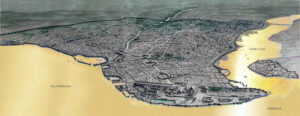 [Constantinople was the largest and wealthiest city in Europe throughout late antiquity and most of the Middle Ages until the Fourth Crusade in 1204.]
[Constantinople was the largest and wealthiest city in Europe throughout late antiquity and most of the Middle Ages until the Fourth Crusade in 1204.]
He also sheds light on the restrictions and indignities the Jewish community had to contend with.
“No Jew dwells in the city, the Jews having been expelled beyond the one arm of the sea. They are shut in by the channel of Sophia on one side; and they can reach the city by water only, whenever they visit it for the purpose of trade. […] Many of the Jews are manufacturers of silk cloth; many others are merchants, some of them being extremely rich; but no Jew is allowed to ride upon a horse except R. Solomon ha-Miẓri, who is the king’s physician, and by whose influence the Jews enjoy many advantages even in their state of oppression. This state is very burdensome to them; and the hatred against them is enhanced by the practice of the tanners, who pour out their filthy water in the streets and even before the very doors of the Jews, who, being thus defiled, become objects of hatred to the Greeks. Their yoke is severely felt by the Jews, both good and bad: they are exposed to beatings in the streets, and must submit to all sorts of harsh treatment.” [The king here referenced was the Byzantine emperor Manuel Comnenus (1143-80)]
His itinerary is mind boggling. He started out in Spain, worked his way through France, Italy, and Greece, before heading to the Middle East. He got as far as Asia Minor and reached parts of Africa.
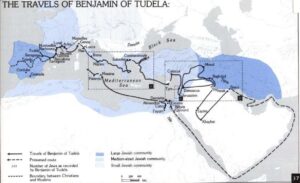
Returning to Europe after his long journey that lasted at least ten years, he had not lost any of his enthusiasm for travel and offers a lengthy description of Palermo. Here an excerpt:
“Palermo contains about 1,500 Jews and large number of Christians and Mohammedans. It is in a district abounding in springs and brooks of water, a land of wheat and barley, likewise of gardens and plantations, and there is not the like thereof in the whole island of Sicily.”
Scholar and traveler Benjamin of Tudela was remarkable for his time, acting like a social geographer and even an anthropologist, given his all-embracing interests that are reflected in his writing. His writings predate that of Marco Polo by more than a hundred years.
It is inspiring to encounter such an individual from the 12th century. I am humbled when I consider the rigors and perils of Benjamin of Tudela’s long journey. He was willing to take this upon himself in order to present the world with a detailed account, the likes of which do not exist elsewhere for that time period. And it gave me great pleasure to reference him in my historical fiction novel, Alina: A Song for the Telling.
Sources:
Benjamin of Tudela. The Itinerary of Benjamin of Tudela: Travels in the Middle Ages. Trans. Marcus Nathan Adler. Introductions by Michael A. Signer, Marcus Nathan Adler, and A. Asher. Published by Joseph Simon/Pangloss Press, 1993.
Images:
Map of his travels [public domain]
Benjamin of Tudela in the Sahara (Author : Dumouza, 19th-century engraving) [public domain]
Palermo: Saracenic (Fatimid) arches, Byzantine dome with mosaics, and roof adorned with Arabic scripts complement each other within the Palatine Chapel in the Royal Palace of Palermo, Sicily, Italy [https://commons.wikimedia.org/w/index.php?curid=295018]
Jerusalem in Medieval time (source: Wright, Thomas, “Early Travels in Palestine”, London, 1848)
Constantinople [Public Domain, https://commons.wikimedia.org/w/index.php?curid=1323430]
[Constantinople was the largest and wealthiest city in Europe throughout late antiquity and most of the Middle Ages until the Fourth Crusade in 1204.]


